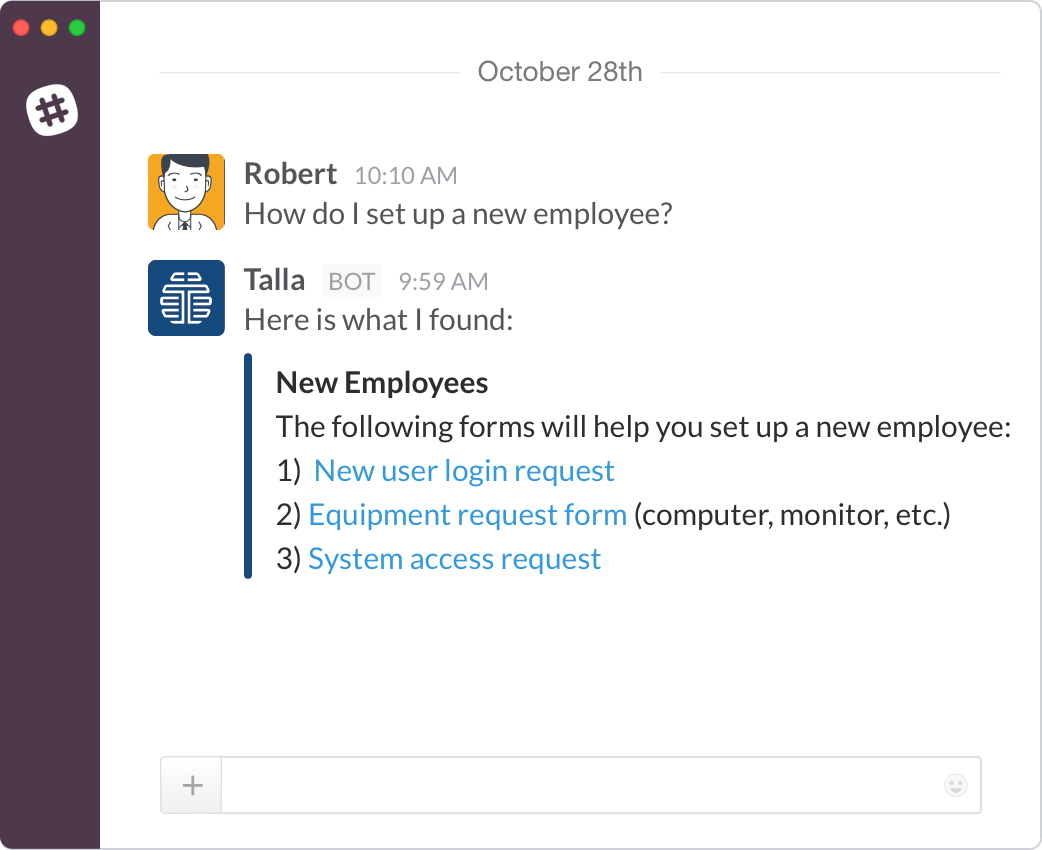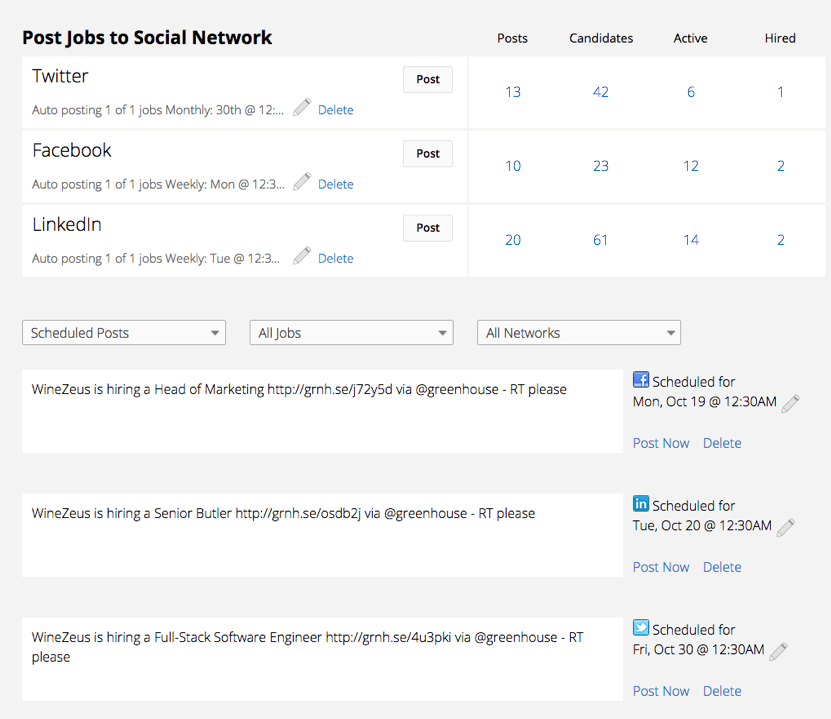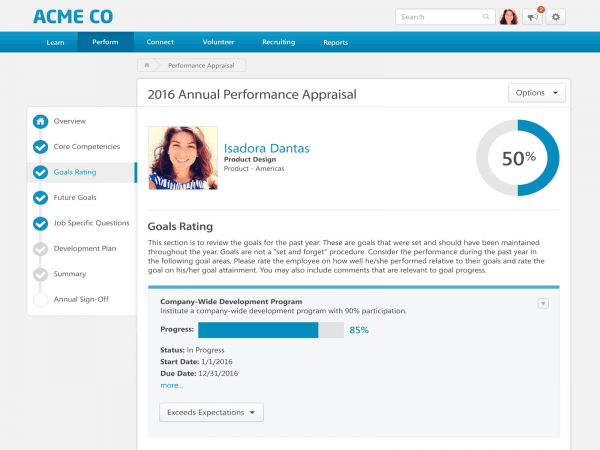3 HR Trends Small Businesses Need to Know About
Many companies still do time-consuming tasks like applicant tracking, payroll and performance management manually. Small to midsize businesses (SMBs) should ditch this approach and embrace HR software to be more efficient.
The right software can improve your work culture and encourage a more productive environment. It can search through candidates more efficiently, distribute salaries on time, help employees bill accurately and provide skill-boosting training modules.
That’s why we’ve identified three important HR trends that SMBs should consider adopting to improve employee relations, profit margins, brand recognition and overall growth.
Read on to find out how these trends are shaping the HR software market and why you should care about them.
Here’s what we’ll cover:
Trend #1: Artificial Intelligence Enhances HR Management
Trend #2: Recruiters Turn to Social Media to Search for Candidates
Trend #3: Train New Digital Age Leaders With Specialized LMS
Trend #1: Artificial Intelligence Enhances HR Management
“By 2027, we will move beyond pure automation aimed at predictable physical work, data processing and data collection.”
Source: Gartner “How We Will Work in 2027,” April 2017 (full content available to Gartner clients)
Why SMBs should care: HR teams will use artificial intelligence (AI) for both simple and complex decision making—from booking meeting rooms to training employees. Automation and AI can save a significant amount of time and effort.
In the IBM Institute for Business Value’s survey of 400 chief HR officers, 50 percent of respondents believe that cognitive computing can improve key HR functions such as operations, hiring and talent development.
In fact, the above-mentioned Gartner report goes so far as to predict that AI could one day be our co-worker. For example, a chatbot could plan your paid time off, automate candidate searches or talk to customers (by understanding patterns from your employees’ conversations).

A chatbot can help you answer FAQs (Source: Talla)
When to opt for intelligent automation services: Automation tools that help improve your employees’ experience are already becoming commonplace, such as the chatbots mentioned above.
For example, Loka’s AI chatbot answers many HR queries, such as upcoming holidays and whether an employee has dental benefits. It can also address employee grievances (such as delays in reimbursements) by using sentiment analysis.
Intelligent automation services can be rolled out in phases, and some functionality will be more relevant in the next 2-5 years. Small businesses should plan to add more features that help with complex tasks like training and strategic decision-making.
These features use data analytics to understand employee needs and then use this data to develop and implement employee-focused initiatives. This could help increase retention and engagement.
But the primary reason to adopt automation in the early stages is that it boosts performance. Here are the three HR functions you should definitely automate:
Performance management: AI can help employees set their own goals and reward them upon completion.
Benefits administration: Chatbots can push little-known benefits to employees. For example, it can recommend yoga classes and enable auto sign-up with a single click.
Applicant tracking: AI can easily scour multiple data sources and get better results. It could also counsel candidates through the hiring process.
Not sure how you can integrate artificial intelligence with your HR software? Call us at (844) 675-2849 for a free consultation with a software advisor.
Vendors that offer automation solutions
These are various types of professional services automation (PSA) software that can automate tasks such as expense management, time tracking, document management, project management and even customer relationship management. Some of the top vendors are:
These solutions will help you increase your operational efficiency. However, it’s best to test some solutions out before your make your final decision. We’ll look at some automation capabilities that small businesses often need and match them with the software vendors that offer those capabilities.
Business need: Help desk
Vendors: Zendesk and AbacusLaw
Automating the process of responding to customer and/or employee queries will save you time and effort. We’ve already talked about chatbots that can help disseminate frequently searched information. Likewise, automated help desks could even help you resolve customer issues.
Business need: Knowledge & document management
Vendors: KeyedIn Projects and Workfront
Creating a central repository of information isn’t easy to do manually. Software can do it much faster and with greater efficiency. Digital records are also easy to search using keywords.
Trend #2: Recruiters Turn to Social Media to Search for Candidates
“Referrals from employees’ social networks produce higher-quality candidates that are likely to remain with the organization longer.”
Source: Gartner “Ten Absolute Truths About Talent Management in Digital Business,” July 2016 (full content available to Gartner clients)
Why SMBs should care: In addition to getting better referrals, Gartner notes that recruiters can establish their employer brand and increase visibility on social media. Because of these benefits, HR teams are increasingly using social media recruiting. LinkedIn’s “Global Recruiting Trends 2017” found that social professional networks accounted for 40 percent of quality hires in 2016.

Post your job on various social media networks
When to opt for social recruiting: Some businesses, such as digital marketing companies, are recruiting via social media from the start. These companies fare better when they source employees who have some online influence over the targeted markets. Established social media influencers can better engage with customers online, which in turn improves customer satisfaction.
Other trends are changing the recruiting landscape and, as a result, companies’ cultures. Our article “5 Recruiting Trends in 2017 (and the 9 ATS Features You Need to Capitalize on Them)” talks about the increased importance of diverse hiring practices, support for mobile devices and strong branding.
LinkedIn’s “2016 Global Talent Trends” report says that 66 percent of job seekers value a company’s culture and values; a poor company culture can drive employees to leave. The report says that only 37 percent of job seekers will remain loyal, i.e., stay for more than three years. That’s why recruiters should use social media to gauge a candidate’s emotional intelligence and ethics, which impacts their commitment to the job.
Want to learn more about adding social media to your ATS? Call us at (844) 675-2849 for a free consultation with a software adviser.
Vendors that offer best-of-breed ATS with social media functionality
ATS solutions can be used by corporate recruiters as well as recruiting agencies. They allow sharing candidate data and their progress with all stakeholders through regular email updates. Here are some of the FrontRunners you could demo:
All the above-mentioned solutions are suited to small businesses. Below, we look at some ATS features that can help with social media recruiting for both HR and candidates:
Business need: Background checks
Vendors: Greenhouse and ApplicantPRO
Gartner’s “Ten Absolute Truths About Talent Management in Digital Business” report emphasizes validating the social network data of a candidate. This will help recruiters check a candidate’s proficiency, suitability to the organization culture and loyalty to previous employers. In the long run, it would also determine the quality of a candidate and their retention prospects.
Business need: Candidate sourcing
Vendors: BambooHR and Recruiterbox
Currently, up to 79 percent of candidates are likely to use social media for job searches, according to Glassdoor. The Gartner report notes that by 2020, millennials will comprise half the global workforce. They are socially oriented, want to work in teams and stay connected in a digital workplace. Therefore, social media hiring is the best way to effectively search and recruit this future workforce.
Trend #3: Train New Digital Age Leaders With a Specialized LMS
“By 2018, more than 80 percent of organizations will leverage user-generated content as part of their corporate learning strategy.”
Source: Gartner “Market Guide for Corporate Learning Suites,” May 2016 (full content available to Gartner clients)
Why SMBs should care: According to Software Advice’s “Learning Management System User Report – 2016,” more than 90 percent of digital learning management system (LMS) users agree that training improves employee performance, retention and engagement.
But businesses should assess whether they’re equipped to train the new generation of employees to become smart managers. An LMS allows users to upload pre-existing training content, personalize training to each learner, create need-based content, track learning progress and evaluate skills. Businesses should use these benefits to attract new hires and engage current ones.

Cornerstone OnDemand’s performance review page (Source: Software Advice)
When to opt for digital learning tools: Continuing learning should be a core value for any business as it helps employees improve skills, innovate in their current roles and increase engagement. A digital LMS is the easiest way to deploy learning materials because it gives employees the freedom to learn what they want, when they want and how they want (i.e., on their preferred device).
As each learner progresses, you can personalize their learning curve by tying overall training objectives to individual goals. A one-size-fits-all learning style can result in low engagement levels. Gartner emphasizes this in “Digital Personalization Improves Learner Experience” (content is available to Gartner clients):
“Evolving employee demographics and the digital workplace mean that learning initiatives will fail to meet employee expectations and desired outcomes if systems do not provide better personalization.”
Gartner recommends emulating the customer retail experience. The LMS should learn and anticipate each user’s needs and provide course suggestions after analyzing their knowledge, preferences and interests.
Learning management systems are crucial to employee welfare and make it easy to train many employees at once. Call us at (844) 675-2849 to talk to a software adviser about LMS in detail.
Vendors that offer digital LMS with performance review
Classroom learning is a tough sell when learners would rather be off doing their work. That’s why SMBs gain a lot by letting employees choose the course and chart their learning path on the digital LMS. This way, you’ll nurture your employees and they’ll value you for the opportunity provided.
The products listed below feature in the HRIS FrontRunners category:
The added benefit of performance management is that employees consider learning programs to be crucial to their professional and personal growth. Digital LMS overcomes the barrier of a physical trainer who is restricted by location and the number of people they can train. Here are some business needs that LMS software fulfills:
Business need: Virtual classroom
Vendors: Cornerstone OnDemand and LearnUpon LMS
This is a necessity in the digital age. TEDTalks on YouTube have gained quite a following and are often effective in imparting knowledge. Companies can also adopt this practice and go the extra mile by adapting the training for mobile devices.
Business need: Content authoring
Vendors: Canvas and iSpring Learn
As Gartner noted in its “Market Guide for Corporate Learning Suites” report, many companies will use user-generated content in their training. This ensures that the courses aren’t generic and are based on rich, real-life experience that millennials and Gen Z value. The younger workforce believes more in experiential learning rather than textbook learning, making this feature important when choosing your LMS.
Where to Go From Here
You should constantly revise your HR strategy according to the changing market scenarios, business needs, labor market and changing expectations among the workforce. This can be achieved by taking three very simple steps:
Automate time-consuming HR tasks by employing intelligent automation service techniques, or artificial intelligence capabilities.
Use ATS features, such as a mobile careers page and social media, to improve the quality of new hires and retain employees with better value propositions.
Use an LMS to effectively upskill and impart key knowledge by making learning an important part of the KPIs in your company.
SMBs can greatly improve the efficiency of their HR teams by adopting the above trends. There are many vendors who offer solutions for each trend outlined in this article. Once you’ve identified your HR needs, you’ll be in a better position to evaluate which software solutions are right for you.
If you have any questions regarding the above trends or want more options for HR solutions, call us at (844) 675-2849. Or, to receive custom price quotes in your inbox, fill out this short questionnaire, and we’ll email you the details.